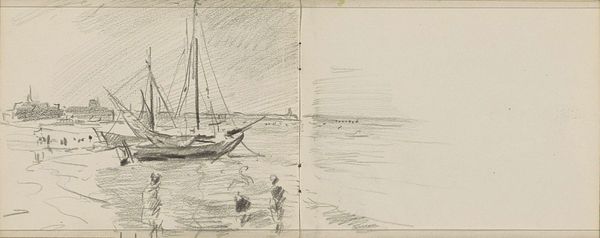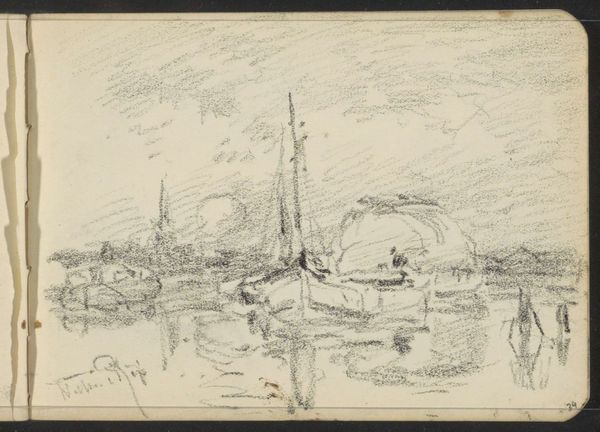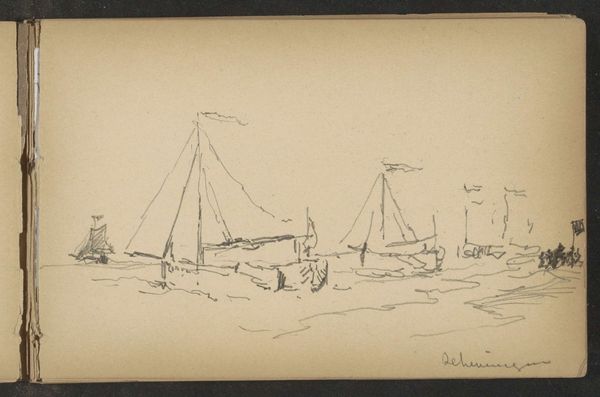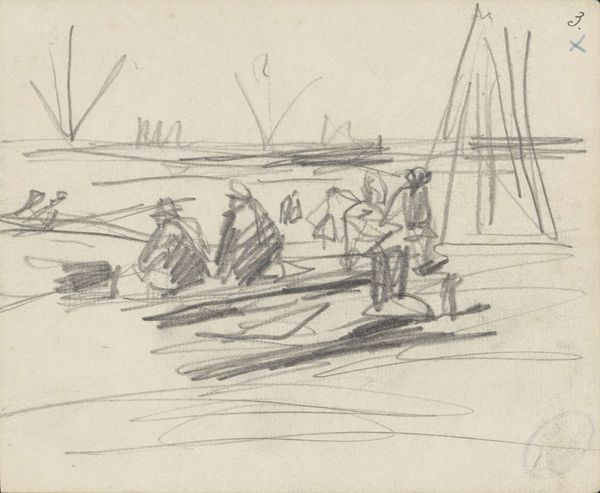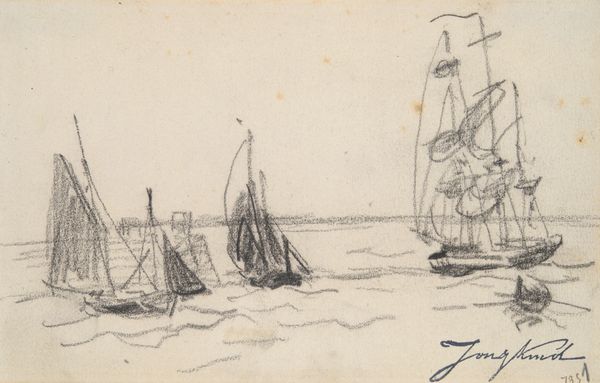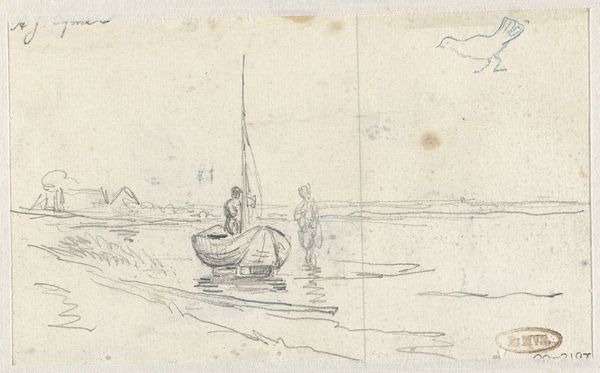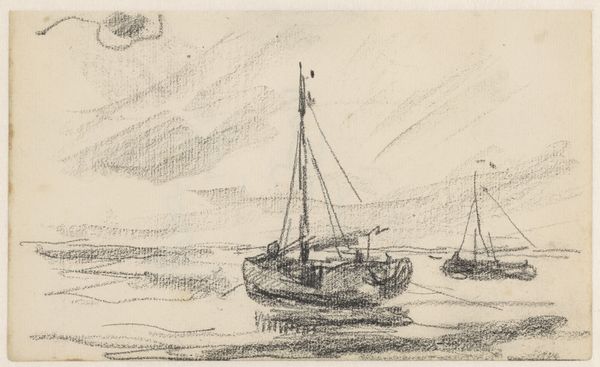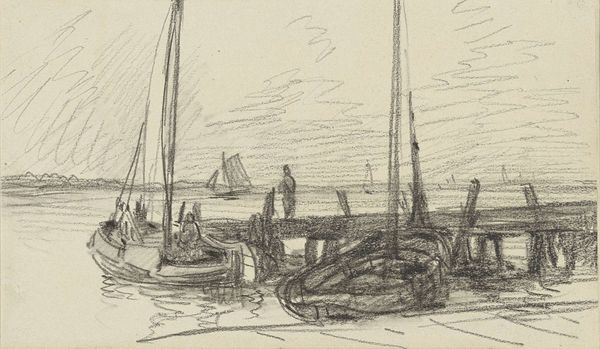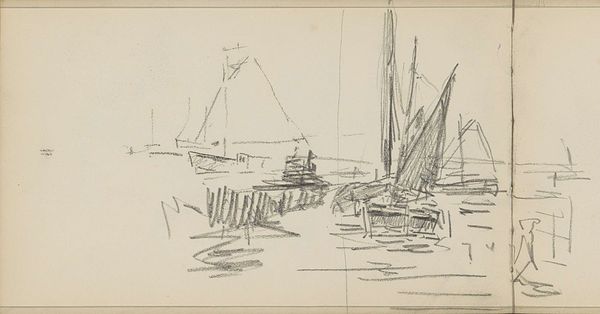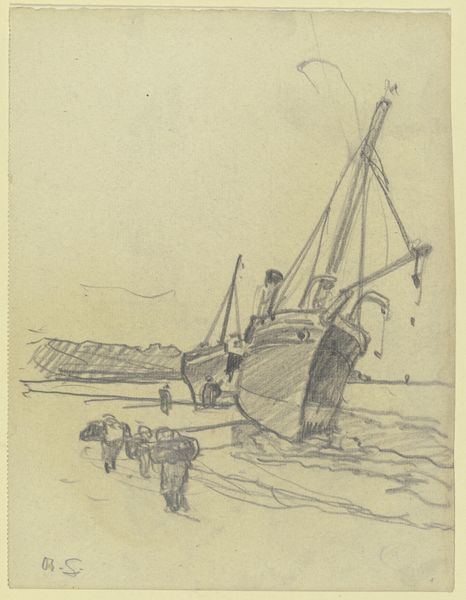
#
ink drawing
#
pen sketch
#
sketch book
#
personal sketchbook
#
ink drawing experimentation
#
pen-ink sketch
#
pen work
#
sketchbook drawing
#
storyboard and sketchbook work
#
sketchbook art
Copyright: Rijks Museum: Open Domain
Curator: Before us we have Alexander Shilling's "Zeilboten bij een aanlegplaats," or "Sailboats at a Landing Place," created in 1907. It's rendered in ink. Editor: There's a quiet intimacy to it. It looks like a quickly captured scene, a fleeting moment on the water. The strokes are minimal, but evoke a specific time of day. Curator: Indeed, Shilling employed the most basic of marks—straight, curved, hatched. Note how those simple means achieve dimensionality, light and shadow, atmosphere. It demonstrates a complete understanding of form economized to the extreme. Editor: Considering it's 1907, I immediately think of increasing industrialization and leisure activities. Do you see this scene reflecting the growing accessibility of maritime pastimes for a broader public, maybe hinting at a changing social landscape where waterways weren’t purely for commerce anymore? Curator: That is entirely plausible. One must concede how the implied narrative shapes the semiotic value. Observe also how Shilling creates structure with line density: look how much detail he captures on the boats versus the sketchier and blurrier forms of the figures. Editor: Interesting that you point that out, perhaps it echoes the evolving role of the working class during the turn of the century and an emerging social divide… Curator: Perhaps. Ultimately, I believe we cannot overlook the self-contained, formal qualities. Look at how Shilling establishes equilibrium by using only lines, setting a horizon only as dark shades across from equally dark masses. Its own language justifies its entire existence. Editor: And this particular style, likely done on-site, almost documents a very real place and time, capturing a fragment of history related to work and play by the water. Art-making itself had become more mobile. Curator: So, we find the aesthetic meeting historical concerns, and find the historical illuminating those concerns. I appreciate seeing the connections you make. Editor: Yes, a nice exercise in interpreting imagery within cultural contexts. Thanks.
Comments
No comments
Be the first to comment and join the conversation on the ultimate creative platform.

